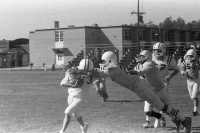Author Interviews, Brain Injury, Brigham & Women's - Harvard, Inflammation / 14.01.2024
Enhanced Macrophages Developed to Decrease Inflammation in Traumatic Brain Injury
MedicalResearch.com Interview with:
Samir Mitragotri Ph.D.
Hiller Professor of Bioengineering
Hansjorg Wyss Professor of Biologically Inspired Engineering
Area Chair, Bioengineering
Core Faculty Member, Wyss Institute for Biologically Inspired Engineering
Harvard John A. Paulson School Of Engineering And Applied Sciences
MedicalResearch.com: What is the background for this study?
Response: Traumatic brain injury (TBI) has a heavy burden on the world, affecting ~70 million people globally each year. Despite its prevalence, there are no clinically approved treatments beyond symptom management. There is an urgent need to develop effective therapies to alleviate the damage caused by TBI.
MedicalResearch.com: What do macrophages typically do?
As part of the innate immune system, macrophages migrate to areas of injury to eat pathogens or debris and manage inflammation in response to injury or infection. However, in the majority of cases of TBI, there is no actual infection from a foreign pathogen, leading to excessive inflammation that spreads damage beyond the initial impact.
(more…)



 If you've been in a scrape and your noggin took a knock, playing it tough and shaking it off isn't the way to go.
If you've been in a scrape and your noggin took a knock, playing it tough and shaking it off isn't the way to go. 










 Sean C. Rose, MD
Pediatric sports neurologist and co-director
Complex Concussion Clinic
Nationwide Children’s Hospital
Assistant professor of Pediatrics
The Ohio State University
MedicalResearch.com: What is the background for this study? What are the main findings?
Response: The link between sub-concussive head impacts and declines in neurocognitive function has been reported by some studies, yet refuted by others. There is very little evidence that has been collected in children as they are sustaining these head impacts.
We initiated a multi-year study of youth football players to provide a more in-depth look at the question. We measured head impacts using helmet sensors during the 2016 football season. 112 players age 9-18 completed a battery of neurocognitive tests before and after the football season.
We found that neither the total burden of head impacts nor the intensity of individual impacts were associated with changes in testing performance from pre to post-season.
Sean C. Rose, MD
Pediatric sports neurologist and co-director
Complex Concussion Clinic
Nationwide Children’s Hospital
Assistant professor of Pediatrics
The Ohio State University
MedicalResearch.com: What is the background for this study? What are the main findings?
Response: The link between sub-concussive head impacts and declines in neurocognitive function has been reported by some studies, yet refuted by others. There is very little evidence that has been collected in children as they are sustaining these head impacts.
We initiated a multi-year study of youth football players to provide a more in-depth look at the question. We measured head impacts using helmet sensors during the 2016 football season. 112 players age 9-18 completed a battery of neurocognitive tests before and after the football season.
We found that neither the total burden of head impacts nor the intensity of individual impacts were associated with changes in testing performance from pre to post-season.




